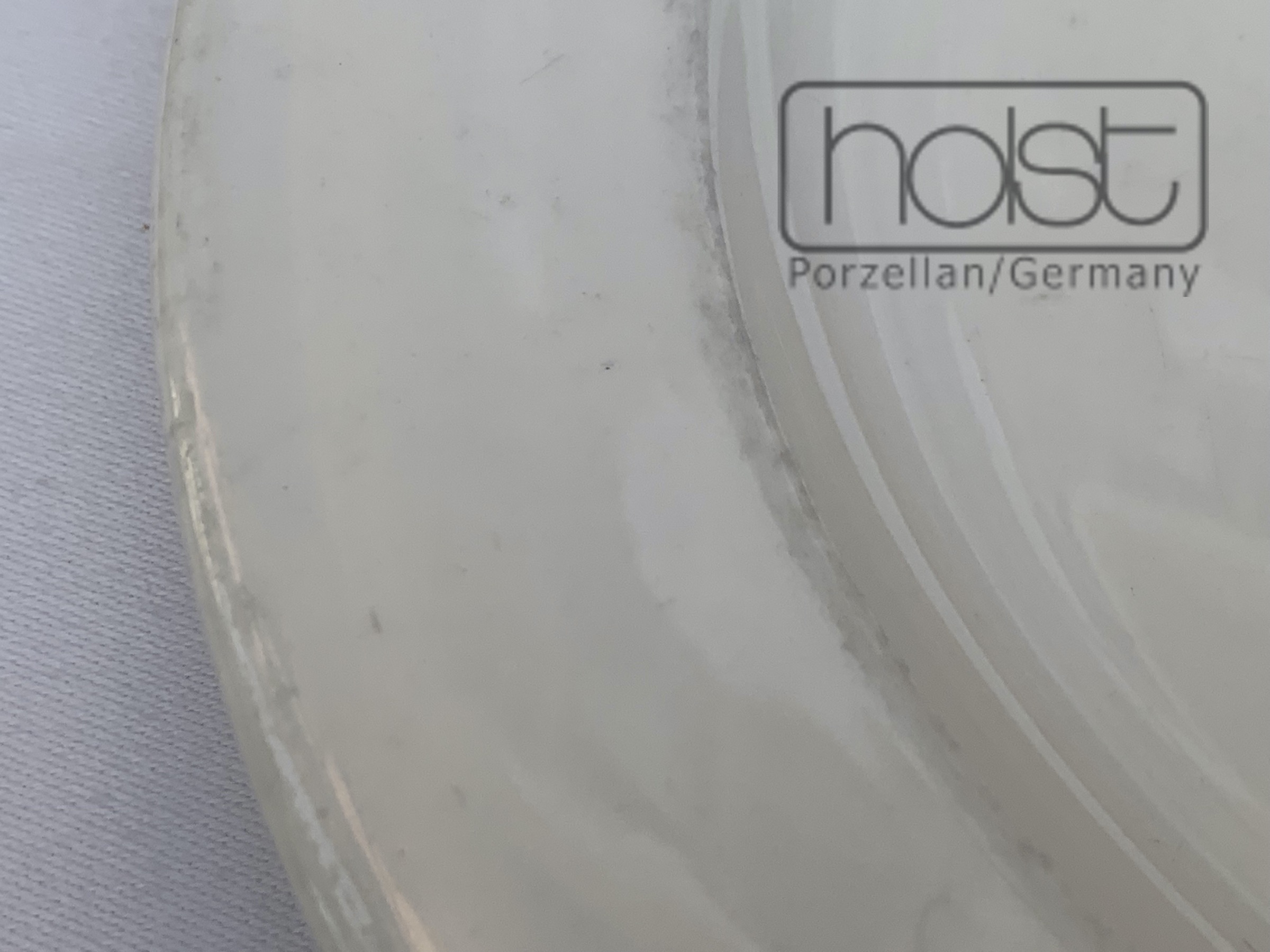Glaze abrasion
Glaze abrasion - abrasion of ceramic glazes
The abrasion of glazes, usually with inferior ceramic types, is the result of mechanical stress, which usually occurs in combination with glaze corrosion. In 95 out of 100 cases the glaze rubs off on articles of the same type and construction, i.e. plate rubs plate or platter rubs platter.
The above picture of a plate from Viterous China shows a typical glaze abrasion in combination with corrosion.
Porcelain is often moved robustly back and forth, especially in commercial kitchens. In larger kitchens, there are on average about 5 stacking operations between dirty dishes and serving again at the guest's table:
- after the washing up,
- Transfer to interim storage,
- Storage in the interim storage facility,
- Transfer to the kitchen station,
- Storage at the kitchen place.
During this process, the set rings of the plates "rub" against the surface of the serving area and quickly and visibly remove the glazes, especially at the protruding contact points. Although the manufacturer of this product fires his plates in the so-called vertical process (in carrier clamps) in such a way that the set collars are also glazed, this does not protect the glaze wear and tear in the long term. Positive: At least the manufacturer does not explicitly describe his goods as porcelain and refrains from cheating on firing temperatures in catalogues and sales documents!
Apart from the fact that such glaze conditions are an optical catastrophe and are perceived by the guest as "dirty & grubby", the porcelain or ceramic can quickly lose its suitability to serve as a food commodity.
Therefore the urgent advice: Corroded crockery must be replaced immediately!
In case of doubt, please ask explicitly for hard porcelain to completely exclude the risk of porcelain corrosion.

